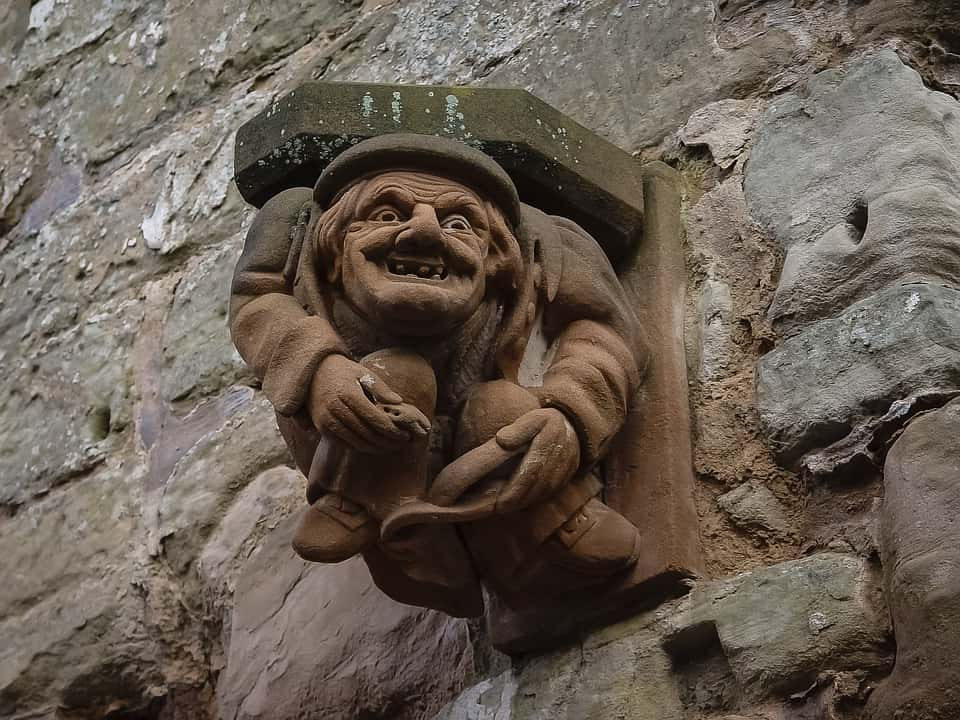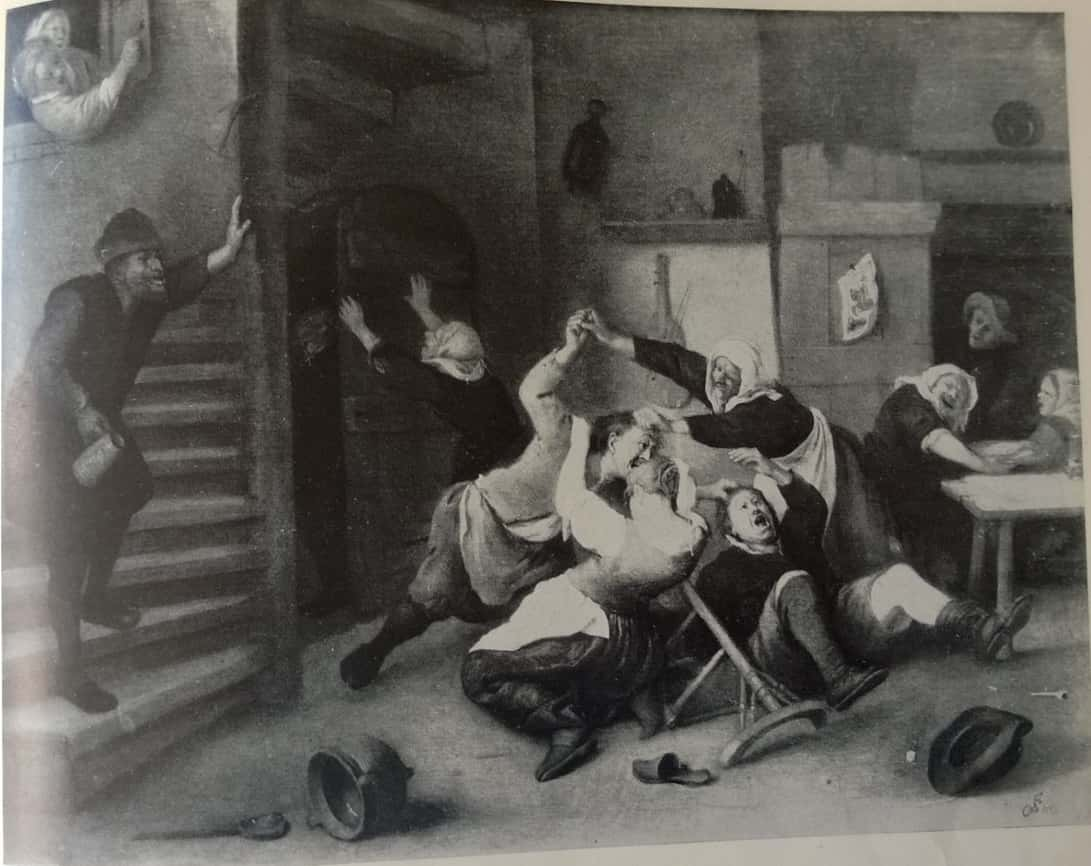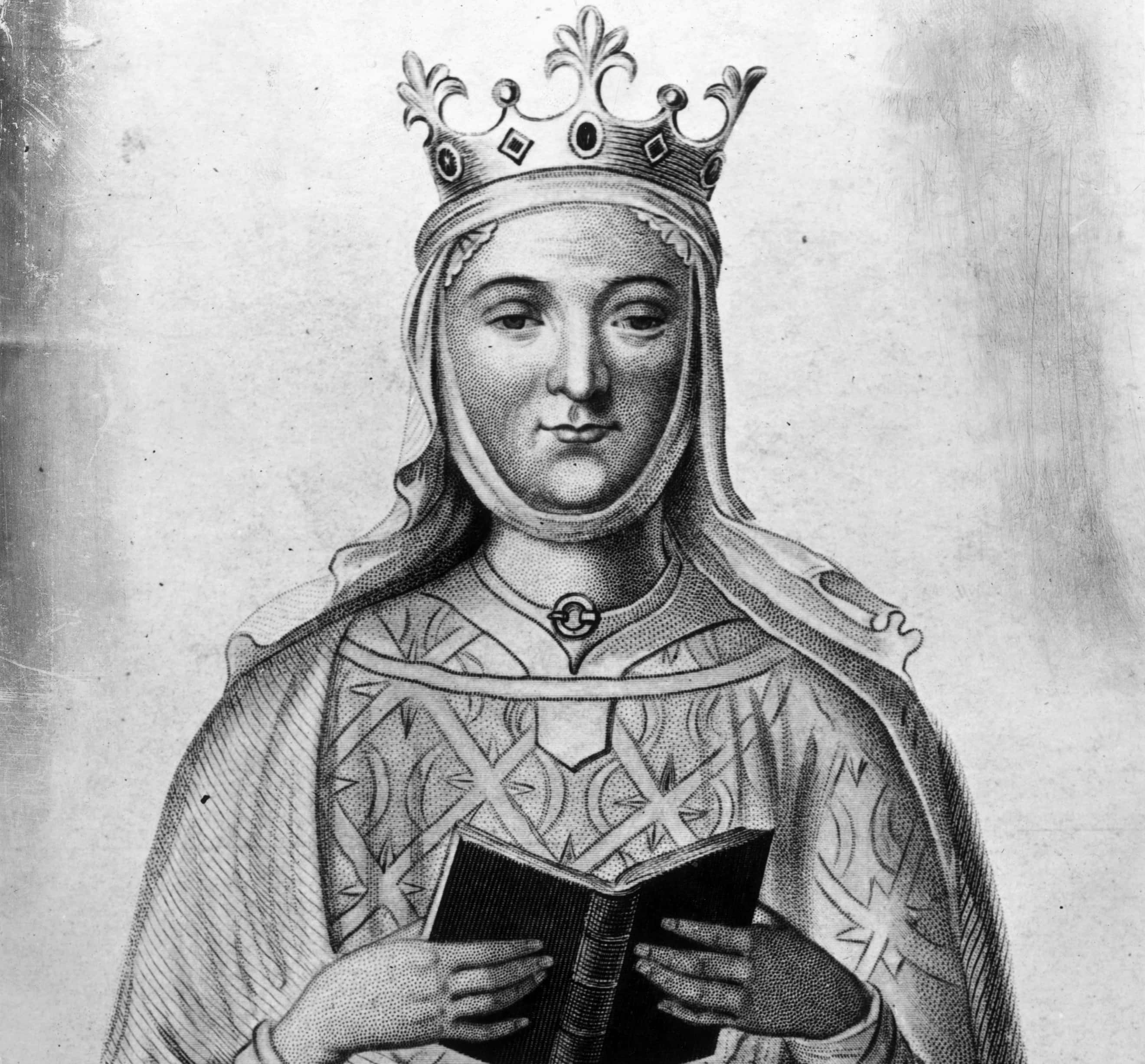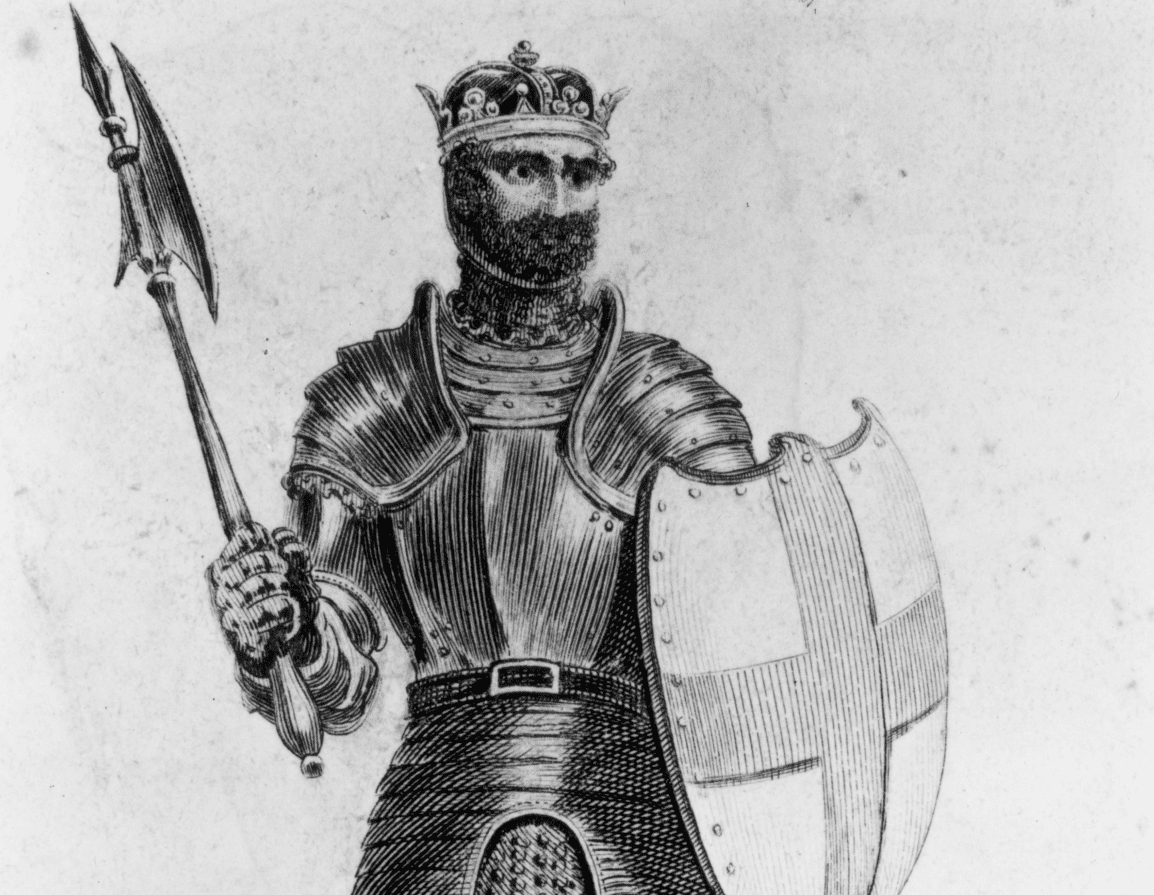For many of us, our mental images of the medieval era are colored heavily by movies, books, and epic tales. We might picture King Arthur and the Knights of the Round Table, riding through the countryside on endless quests. Or maybe we think of someone like Robin Hood, gallantly defending the poor and powerless against the rich and cruel. But the true history is even darker and more dramatic than we imagine. Here are 42 facts you might not have known about Medieval England.
Medieval England Facts
42. Any Given Sunday
“Mob football” was a medieval “sport” that involved an unlimited number of players, a pig’s bladder, and very few rules. Because it was so destructive, it was banned by King Edward II in 1314. Leave it to those uncivilized Americans to bring it back.
41. Archerybishop
While football was banned, archery was compulsory. In 1363, King Edward III instituted the archery law, which demanded that all male subjects practice archery for two hours every Sunday under the supervision of the local clergy. No doubt you've heard of medieval England's supremely talented archers. Turns out that came from relentless practice.
40. For Science! Huzzah!
Today the term “medieval” tends to be associated with backward thinking. But during the 13th century, contemporary scientists and researchers were inspired by the works of Aristotle and other classical authors to think more about the physical world around them.
39. It Was How Long Ago, Exactly?
When we talk about medieval times, we're usually referring to the Middle Ages, which lasted for a pretty long time: from about 400 to 1485 AD.
38. There’s a New Ruler in Town
William the Conqueror took over England after his victory at the Battle of Hastings in 1066. He was the first Norman King of England. William commissioned the Domesday Book in 1086 to compile a census of his new lands and people. The Normans brought a lot of change to England, including establishing Oxford University and the Tower of London.
37. Fad Dieter
William gained so much weight later in life that the French king described him as a pregnant woman about to give birth. In an effort to slim down, William tried his own version of a fad diet, drinking only wine and spirits for a time and refusing any solid food. It didn’t work.
36. An Ego Too Big for the Door
King John I is remembered as one of the worst and most oppressive rulers in the history of the country. After many years of his terrible reign, he was forced to sign the Magna Carta, a document that limited the King's power. Because of its role in monarchical power, The Magna Carta became one of the most important documents in English history, period.
35. Who Do You Think You Are?
There was a time when English people didn’t have last names. Before 1066, people just went by descriptions to help differentiate them from others with the same name (think "Little John"), and people's names could change as they aged (if they lost an eye or went bald, their name just might change as well).
34. Just Livin’ Life
Medieval children had to grow up quickly, with girls sometimes being forced to marry at the age of 12.

History's most fascinating stories and darkest secrets, delivered to your inbox daily.
33. Mythbusting
If you were lucky enough to make it past your teens in the Middle Ages, chances were that you would live to be in your 50s, sometimes even older. The idea that few people lived past 30 is a myth.
32. Ahead by a Century
Long before the famous prophet Nostradamus was alive, the Middle Ages had Roger Bacon. He was a friar who liked to make predictions. For example, he claimed “cars can be made so that without animals they will move with unbelievable rapidity,” and “flying machines can be constructed so that a man sits in the midst of the machine.” A man ahead of his time, that Bacon.
31. That’s Not Their Title
Don’t call the poor, working people of medieval England peasants. No, really—the term wasn’t created until 15th century France, so they literally wouldn’t have known what you were talking about.
30. They, the People
So, what was the proper term? Glad you asked! There were actually a number of different names for the lower classes, depending on what they did. The Domesday Book lists freemen, villeins, cotters, bordars, and slaves. All but the freemen “belonged” to the local lord of the manor and required his permission to do just about anything.
29. The Original Pyramid Scheme
Under the feudal system, the king took a quarter of the land for himself, gave another quarter to the Church, and split the remaining half among 12 people loyal to him, who then put knights in charge of the farmers. A common way to picture the system is with a pyramid: all the peasants are beneath the knights, who are beneath the lords of the land, who are beneath the king himself, who answers only to God.
28. Just a Little off the Top
The iconic red and white barber’s pole actually symbolized blood and bandages, as most medieval barbers also performed double duty as surgeons and dentists. Bandages stained with blood would be washed and hung from a pole outside the barber’s shop and, after twisting in the wind, would wind around the pole into the recognizable spiral pattern. How barbaric.
27. If I Carry the One, That Makes It 100, Right?
The Hundred Years’ War between England and France actually lasted longer than 100 years. Starting in 1337, it went on until about 1453. Maybe they just couldn’t do math properly back then?
26. Kangaroo Court
There are records from medieval times that animals had been tried for murder and other crimes. There was a case where mice were taken to court for stealing, and a swarm of locusts were once tried for eating crops. Perhaps most shockingly, in medieval England the animals involved in zoophilic activities were deemed equally responsible. The crime was punishable by execution.
25. What’s Your Size?
Despite what were often hard times, fashion was still a priority for the nobility of the Middle Ages. In the 1300s, the latest fashion craze among English men was...long shoes? As in, Peter Pan-style pointy toed footwear. Seems silly, but it still beats frosted tips.
24. There’s Gotta Be a Stuffing Joke in Here Somewhere
More than 100 years after long-toed shoes became popular, their length had grown so extreme that men had to stuff the toes of their shoes with wool, moss, or even whalebone. Some nobles had to tie the tips of their shoes to their leggings so they could walk properly. Even crusaders wore the fashionable footwear, but if they needed to make a quick escape, they would chop off the ends of their shoes so they could run better.
23. They’re Too Sexy for Their Pants
The odd choice of footwear wasn’t the only thing different about how men used to dress. The younger male nobles fancied their bodies, and wanted everyone else to take notice. You’d often spot these nobles wearing a codpiece, a pouch that emphasized the groin area. Sometimes, these young men even wore a corset to give them a slimmer figure.

22. Not Cool, Bro
According to historical records of the medieval period, the hated King John I was known to have several mistresses. While this wasn’t uncommon among kings—shocker, we know—John took it a step too far by choosing noblewomen who were already married for his extramarital romps. This kind of behavior made John many enemies, who later made exaggerated accusations in order to justify their actions against him when it came to his unpopular rule.
21. Da Bears
Brown bears once roamed the English countryside, but they became extinct around the 11th century. In the latter parts of the Middle Ages, they were brought back to England for sport. Although, we suspect this was not a sport that benefited the bears.
20. Do You Believe in Magic
The stereotype of the evil witch who had to be burned at the stake was not a medieval thing, but rather a more modern phenomenon that started in the 16th and 17th centuries. For much of the Middle Ages, the church’s position on magic was that it was stupid and didn’t work.
19. The Stone Keep
"Stone Keeps" are probably what comes to mind when you think of a medieval castle: thick stone walls, a few narrow windows, and defensive turrets used for keeping watch. These were developed in the 12th and 13th centuries, and were very difficult to overtake. There were no toilets in medieval castles, just a stone room with a hole where clothing was also kept, as the smell repelled insects.
18. Nah, I’ll Keep Believing the False Story
There’s a long-standing idea that gargoyles were added onto buildings to help keep evil spirits away, but that isn't really the case—they were actually used as drainpipes. Rainwater would spew from the gargoyle’s open mouth away from the building to help preserve the walls from water damage.
17. Homecourt Advantage
There was a major fight between a group of Oxford students and local townsfolk after a student complained about the drinks at a neighborhood tavern. The ensuing conflict cost the lives of 30 locals and 60 students. So…we guess the locals won.
16. Breaking the Bank
In medieval England, the word “pygg” referred to a type of clay that was used to make jars or pots. Coins were put into “pygg jars,” and by the 18th century, they became known as piggy banks.
15. Filthy Rumors
Although medieval folk are often depicted as filthy, the truth doesn't necessarily match up. Many people believed in the tenet that “cleanliness is next to Godliness,” and took whatever opportunity they had to bathe. Hygiene did deteriorate somewhat, however, after public baths were opposed by Protestants in the 16th century, due to high levels of prostitution.
14. What an Ordeal
If you were accused of a crime in medieval England, you didn’t get a judge and jury to find you guilty or innocent. Instead, the powers that be usually implemented something called a "trial by ordeal." There were many different “ordeals” that a defendant potentially went through, the three most common were: fire, water, and combat.
13. I Think I'll Pass, Thanks Though
An Ordeal by Fire forced the defendant to hold a red-hot iron bar while walking three paces. You were found to be innocent if your hands were healed after just three days, but guilty if they weren’t. In the Ordeal by Water, you were tied up and thrown in a pond. If you floated, you were guilty, but if you drowned, you were innocent, for all the good that did you. Ordeal by Combat is exactly what it sounds like: someone would battle with their accuser, and the person who was still standing at the end was proven to be right.
12. Wreck and Ruin
In the Middle Ages, the infamous disease the Black Death would wipe out huge swaths of the English population. The devastation was so severe that you might have found entire ghost towns in the English countryside, where the plague had killed the whole village.
11. No One Was Immune
For many years, people have believed that the plague was spread by fleas that hitched a ride on the rats that followed around human populations, but new evidence suggests that the rats weren't to blame—it's more likely that the fleas and lice that lived on humans and their clothing were the source of the horrible pandemic.
10. Strength in Numbers
Yersinia pestis, the bacteria responsible for the Black Death, is unable to survive outside the body of its victims and is unable to penetrate or hide on a body. But it has a secret weapon: it can disable its host's immune system. With nothing to oppose it, it can multiply quickly and overrun a victim within hours.
9. We'll Have Nun of That!
We’d all like to think that medieval knights were chivalrous and all that, but the truth is that most of them really weren’t. Case in point: Sir John Arundel, who, in 1379, convinced nuns at a convent to let him stay for a few nights. Wanting to see the best in him, the nuns agreed. But Arundel and his men took advantage of the situation, looting the nunnery and kidnapping several nuns. Then, the men stormed a nearby church and kidnapped a newly-married bride before finally heading back out to sea and throwing their hostages overboard.
8. Absentee Monarchy
Although King John was despised by the people and aristocracy alike, history has been kinder to his brother, King Richard the Lionheart. However, Richard only spent about six months of his rule in England. His wife, Berengaria of Navarre, didn’t even set foot in England while he was king, making her the only queen not to do so.
7. Forgive Me, Father
Richard was the spare’s spare, if you will. He was the third son born to his parents, Henry II and Eleanor of Aquitaine. Richard and his brothers weren't known for their great respect for dear old dad. They rebelled against their father in 1173 and 1174, when Richard was only about 16 or 17 years old.
6. Medieval Mama's Boy
This teenage rebellion didn't go Richard's way at all, and Henry II punished his young son in a brutal manner. Henry had his own wife, Richard's beloved mother Eleanor, imprisoned. There were rumors that Eleanor had even encouraged her sons to rebel against their head of household, so her imprisonment may have been her own comeuppance. However, Richard was a bit of a mama's boy, and Eleanor was also used as insurance to make sure Richard kept himself in line. She remained imprisoned until Henry's death. Still, the joke was on Henry: three of Eleanor's sons, including Richard and John, would become kings.
5. Caped Crusader
Though not the most loyal of sons, Richard was a military genius, and he spent much of his rule fighting the Crusades, Europe's "holy war" against Muslim territories.
4. The King Is Dead
Richard, at only 41 years old, died after a crossbow bolt snagged his left shoulder in 1199 during a castle siege. Once the bolt was ripped out, the wound quickly became infected. He died just two days later—but his beloved Eleanor was able to make it to the site to see him before he ultimately passed. He died in her arms.
3. One Can Forget, if the Dead Do the Forgiving
Before his death, Richard summoned the man who had shot him; he turned out to be a mere boy. When asked why he had shot the King of England, the child spat out that Richard had killed his father and brothers, and so he was seeking his revenge. He thought he was facing certain execution, but Richard's final words to the boy were an act of mercy. "Live on, and by my bounty behold the light of day," the King said, forgiving the boy and sending him away with 100 shillings. Tragically, Richard's royal pardon may have been immediately betrayed: one source reports that a vicious captain named Mercadier went against the King's wishes, flaying the boy alive and hanging him in revenge.
2. Baby's First Judicial Murder
Margaret of Anjou was a Queen of England throughout the Cousins War during the 1400s (now known as the Wars of the Roses). Ever the proactive mother, Margaret once allowed her 7-year-old son to decide exactly how to execute his captured enemy cousins. The prince chose the classic “take their heads off,” which proves kids can be sensible when they’re raised with trust and structure.
1. Explosive
After William the Conqueror died of an infection from ruptured intestines following an accident with his horse, something even more disgusting happened at his funeral. When priests tried to stuff the corpulent king into his coffin, they pushed down on his abdomen, causing those ruptured intestines to explode everywhere. Reportedly, his loyal mourning subjects ran as fast as they could for the nearest exit when they caught a whiff of the putrid odor emanating from their ruler. What a way to go!
Sources: 1, 2, 3, 4, 5, 6, 7, 8, 9, 10, 11, 12, 13, 14, 15, 16, 17, 18, 19, 20




















































